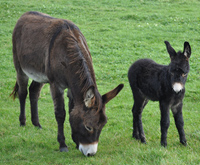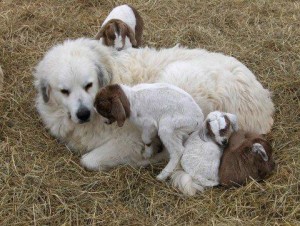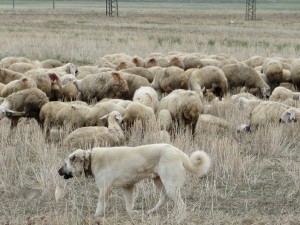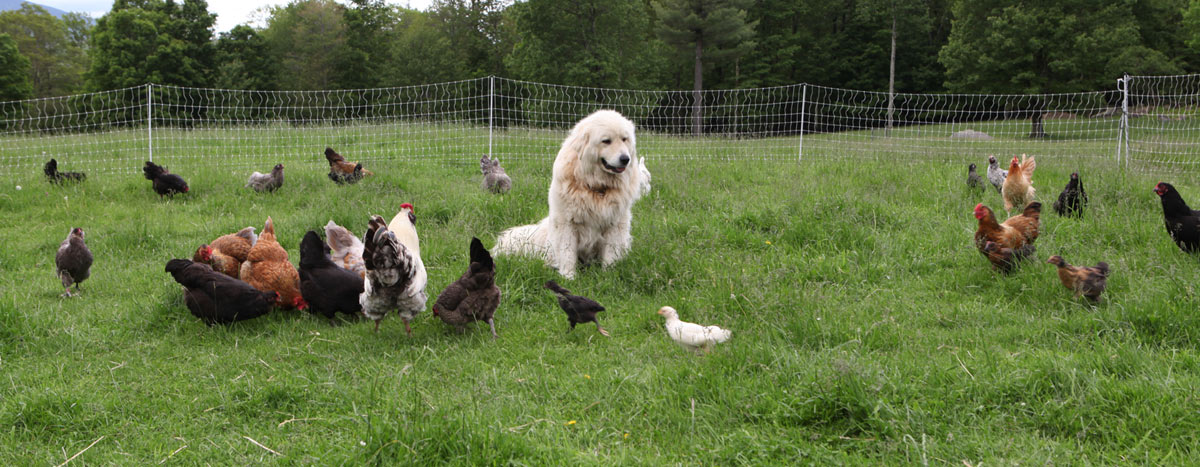 David Kennard
David Kennard Guardian animals “speak the language” wild carnivores understand. They tell the carnivore that this farm is THEIR territory, and if they attempt to approach the animals they are protecting, it may cost their life. Wild carnivores understand this, because their world is all about survival, and making decisions that support their survival. They know that if they are badly injured by a guardian animal, they will die. It is all not worth this danger.
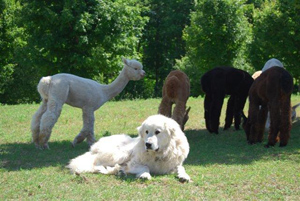 Mary McGuire
Mary McGuire Dogs: These special dogs have been bred in the remote pastures of Europe for centuries. Though these special breeds of dogs have worked as a team with the shepherds, they are completely capable of working independently and left alone with the flock. Their normal behavior is calm and placid. However, they are wary of any intruder, and are fierce and fearless when provoked.
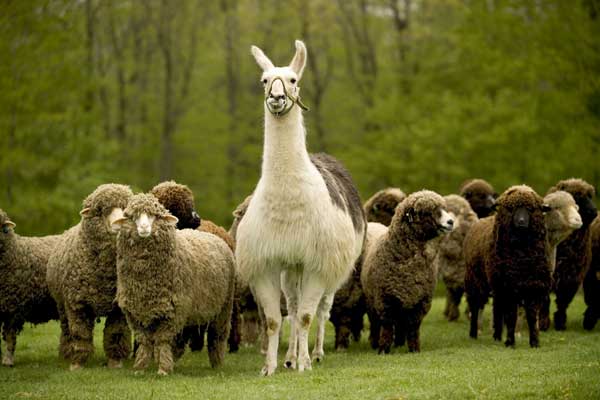 Marc Page
Marc Page Llamas: The Andes of South America are home to this member of the American camel family. They are naturally aggressive to all canines, wild or domestic. As guardians, their typical responses are being alert, alarm calling, walking or running to the predator, herding the sheep, and positioning themselves between the sheep and the predator.
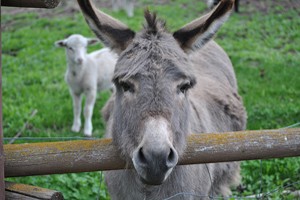 Donkey Bagsgroove
Donkey Bagsgroove Donkeys: These descendants of the Wild Ass of Africa are very territorial, and instead of running away from an intruder as a horse may do, they will run toward them. They, like llamas have an inherent aversion to all canines, wild and domestic, and will bray, bare their teeth, run and chase, and attempt to bite the intruder.
Helpful Websites
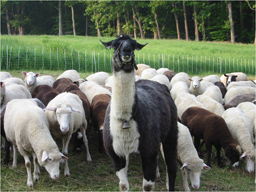 David Kennard
David Kennard Organizations that specialize in specific breeds of guardian dogs share a great deal of information about each dog, their history, breeding and care on their websites. They are an excellent resource to guide you to responsible breeders. There are also websites that have a wealth of information on a number different guardian dog breeds.The website of Appalachian Llama and Alpaca Association offers excellent information about Llamas and their care. They also have an outstanding mentoring program for those who wish to acquire a Llama, and you can contact this free service through their website.Included here is a website that gives thorough information on donkey care, and another regarding donkey adoption through the BLM.
- lgd.org
- gpcaonline.org: Great Pyrenees
- maremmaclub.com: Maremmas
- anatoliandog.org: Anatolian Shepherds
- akbashclub.com: Akbash
- kangalclub.com: Kangals
- canismajor.com/dog/livestock.html
- galaonline.org: Greater Appalachian Llama and Alpaca Association

Useful Books
The following books are excellent resources to learn more. They’re available through your local bookstore, online, or from your local library (try interlibrary loan if your library doesn’t own a copy).
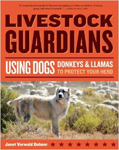
Livestock Guardians: Using Dogs, Donkeys, and Llamas to Protect your Herd
by Janet Vorwald Dohner 2007
This is a thorough reference book, one to keep on your shelf. The author shares with you her vast experience with guardian dogs, and all that is necessary to know, before you seek one out. But don’t forget the Llamas and donkeys that can be very effective guards, and are preferred by other farmers for their own reasons.
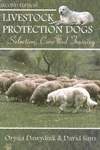 Livestock Protection Dogs: Selection, Care, and Breeding 2nd edition
Livestock Protection Dogs: Selection, Care, and Breeding 2nd edition
by Orysia Dawydiak and David Sims 2009
This is another thorough reference book with solid information on guardian dogs. All that you need to know about the diverse breeds and their needs.
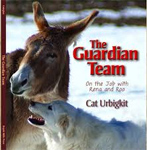 The Guardian Team: On the Job with Rena and Roo
The Guardian Team: On the Job with Rena and Roo
by Cat Urbigkit 2011
Written by a Wyoming rancher, this delightful book shares her experience of adopting a wild burro and a Great Pyrenees guardian dog for the purpose of guarding her sheep. Though it is written as a wonderful picture book for children, it is very informative regarding her introductions of the guardians to each other and to the sheep and lambs they will protect.
Online Essays
Jan Vorwald Dohner is the author of Livestock Guardians; Using Dogs, Donkeys, and Llamas to Protect your Herd, has over 30 years of experience with livestock guardian dogs, and lives on her farm in Michigan. The following links are blogs she has written for Mother Earth News regarding guardian animals.
- Choosing a Livestock Guardian Dog
- How Livestock Guard Dogs Work: the Question of Genetic Behaviors
- Choosing a Livestock Guard Dog Breed: Part One – Homesteading
- Choosing a Livestock Guard Dog Breed, Part Three – Homesteading
- Selecting a Guard Llama – Homesteading and Livestock
- Selecting a Guard Donkey – Homesteading and Livestock
- Using a Donkey as a Livestock Guardian: the Pros and Cons
Video
This is a short and marvelous film introduces you to guardian dogs, more specifically the Great Pyrenees. You get to observe how they learn to bond with the goats when they are young pups, and how the guardian dog “speaks” to the wild dog, Coyote.
This is a film about a ranch in Saskatchewan, Canada, situated close to a Canadian National Park, where large carnivores are present. Though their ranching situation is different from the farming in the North Eastern United States, the film is an excellent introduction to different breeds of guardian dogs, and what their strengths are. (Note that this leading rancher refers to the “coyote packs.” However, we know now that they are “families,” and as such, their social relationships are very different from the concept of “pack”)
This short film gives you an opportunity to observe a guardian dog IN ACTION, this time with a bear. Again, when needed, these special dogs are fierce and fearless. As a result, it ends well for all.


